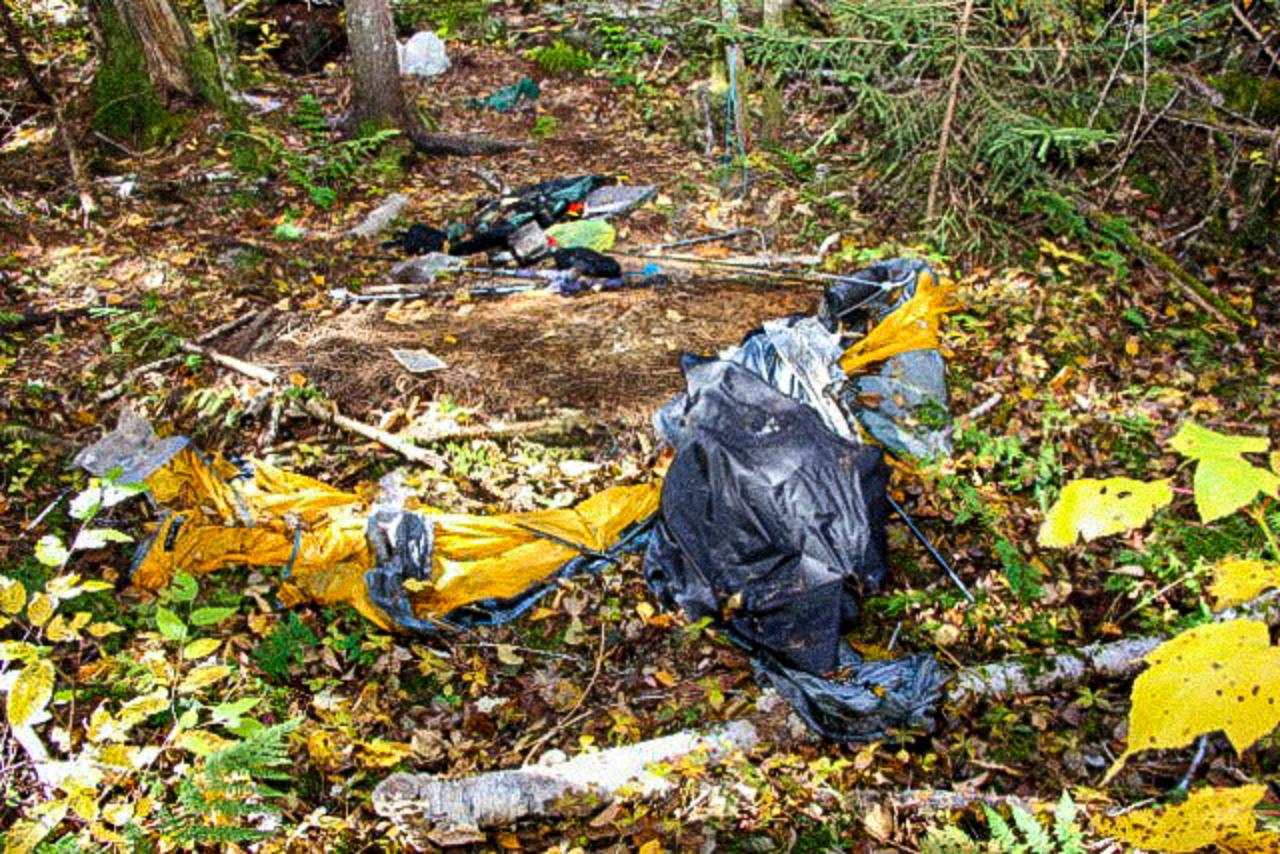The Appalachian Trail, spanning over 2,000 miles and 14 states, attracts adventurers from around the world seeking the thrill and challenge of hiking through the breathtaking wilderness. However, this picturesque trail also holds its fair share of dangers and mysteries.

One such mystery revolves around the disappearance of Geraldine Largay, a 66-year-old retired air force nurse, who embarked on a solo thru-hike of the Appalachian Trail in the summer of 2013. Despite her extensive hiking experience and careful planning, Largay vanished without a trace. This article digs into the perplexing case of Geraldine Largay, her desperate struggle of 26 days for survival, and the questions it raises about safety measures on the trail.
The journey begins

Geraldine Largay, affectionately known as Gerry, was no stranger to long-distance hiking. Having explored numerous trails near her home in Tennessee, she decided to challenge herself with the ultimate adventure – hiking the entire length of the Appalachian Trail. With her husband’s support and encouragement, she set off on her thru-hike in July 2013.
Straying from the trail
Largay’s journey took an unexpected turn on the morning of July 22, 2013. While hiking alone, she veered off the trail to find a secluded spot to relieve herself. Little did she know that this momentary detour would lead to her disappearance and a desperate fight for survival.
A desperate plea
Two weeks after wandering off the trail, Largay left behind a heart-wrenching plea in her notebook. Dated August 6, 2013, her words were a haunting message to the world:
“When you find my body, please call my husband George and my daughter Kerry. It will be the greatest kindness for them to know that I am dead and where you found me – no matter how many years from now.” —Geraldine Largay
On the day she disappeared, George Largay was not too far from her location. He had driven to the Route 27 Crossing, which was a 22-mile journey from the shelter where she had been seen last. She had been attempting to complete the 2,168-mile Appalachian trail, and had already covered over 1,000 miles.
In accordance with the tradition of long-distance hiking, Largay had given herself a trail name, which happened to be “Inchworm”. George had the chance to meet his wife every so often to provide her with supplies and to spend some time with her.
The extensive search effort
Largay’s disappearance triggered a massive search and rescue effort, with hundreds of volunteers and professionals scouring the area around the Appalachian Trail. Over the next few weeks, the search team included aircraft, state police, national park rangers and fire departments as well. Unfortunately, those weeks’ heavy rainfall obscured the trail, making the search more difficult. They pursued hikers’ tips, scoured side trails and set dogs to searching. Despite their utmost dedicated efforts, Largay remained elusive for over two years.
Questionable response and safety measures
The discovery of Largay’s remains in October 2015 raised questions about the response of search and rescue teams and the overall safety measures in place on the Appalachian Trail. Some critics argued that the search effort should have been more thorough, while others highlighted the need for improved communication tools and infrastructure along the trail.
The final 26 days
Largay’s tent, along with her journal, was discovered about two miles off the Appalachian Trail. The journal provided a glimpse into her desperate struggle for survival during her final days. It revealed that Largay had managed to survive for at least 26 days after getting lost but ultimately succumbed to exposure, lack of food, and water.
It is seen in the documents that Largay made an attempt to text her husband when she became lost while out walking. At 11am that day, she sent a message, which read: “In somm trouble. Got off trail to go to br. Now lost. Can u call AMC to c if a trail maintainer can help me. Somewhere north of woods road. XOX.”
Unfortunately, the text never made it due to poor or insufficient cell service. In an effort to reach a better signal, she went higher and tried to send the same message 10 more times in the following 90 minutes, before settling down for the night.
On the following day, she unsuccessfully attempted to text again at 4.18pm, saying: “Lost since yesterday. Off trail 3 or 4 miles. Call police for what to do pls. XOX.” By the next day, George Largay had become concerned and the official search began.
A body was found

In October of 2015, a US Navy forester came across something strange – a “possible body.” Lieutenant Kevin Adam wrote about his thoughts at the time, saying: “It could have been a human body, animal bones, or if it was a body, could it have been Gerry Largay?”
When he arrived to the scene, Adam’s doubts evaporated. “I saw a flattened tent, with a green backpack outside of it and a human skull with what I believed to be a sleeping bag around it. I was 99% certain that this was Gerry Largay’s.”
“The campsite was difficult to see unless you were right next to it.” —Lieutenant Kevin Adam
The campsite was tucked away in a dense wooded area that was near both Navy and public property. Largay had constructed a makeshift bed out of small trees, pine needles, and possibly some dirt so her tent wouldn’t get wet.
Other basic hiking items found at the campsite included maps, a raincoat, a space blanket, string, Ziploc bags, and a flashlight that still worked. Small human reminders were also discovered, such as a blue baseball cap, dental floss, a necklace made with a white stone, and her haunting notebook.
The lost opportunities
There was also evidence of lost opportunities: an open canopy in the vicinity where she could have been easily seen from the sky, had her tent been underneath. Additionally, Largay had also tried to set fires, Adam suggested, noting nearby trees that had been scorched black, seemingly not from lightning but by human hands.
A reminder of safety measures
Largay’s case serves as a stark reminder of the importance of safety measures for hikers on the Appalachian Trail and other long-distance trails. The Appalachian Trail Conservancy emphasizes the need for hikers to carry essential navigation tools, sufficient food and water, and to share their itinerary with someone back home. Regular check-ins and preparedness can make a significant difference in ensuring hiker safety.
Learning from the Past
The disappearance and tragic demise of Geraldine Largay left a lasting impact on the hiking community and those who loved her. Her case serves as a reminder of the unpredictable nature of the wilderness and the need for caution even for experienced hikers.
Largay’s case prompted a review of search and rescue protocols on the Appalachian Trail. Lessons learned from her tragedy have led to improvements in safety measures, including enhanced communication infrastructure and increased awareness of the potential risks associated with hiking in remote areas.
Honoring Geraldine Largay
Although her life was cut short, Geraldine Largay’s memory lives on through the love and support of her family and friends. The placement of a cross at the site where her tent once stood serves as a solemn reminder of her enduring spirit and the challenges faced by those who venture into the wilderness.
Final words
The disappearance and death of Geraldine Largay on the Appalachian Trail remains an unforgettable tragedy that continues to haunt the minds of hikers and nature enthusiasts. At the same time, her desperate struggle for survival, as documented in her journal, serves as a testament to the indomitable human spirit in the face of adversity.
As we reflect on her tragic tale, let us remember the importance of preparedness, safety measures, and the need for ongoing improvements in trail management to ensure the well-being of hikers who dare to embark on this epic journey.
After reading about Geraldine Largay, read about Daylenn Pua, an 18-year-old hiker, who disappeared after setting out to hike Haiku Stairs, in Hawaii.




